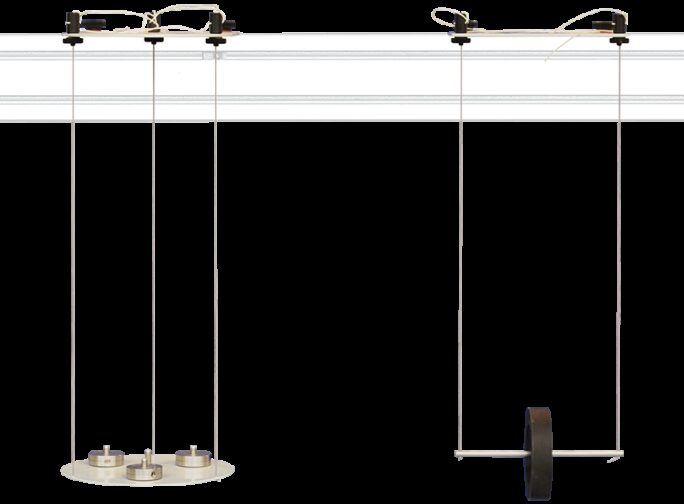Experiment
TM162
FILAR PENDULUMS
Experiment for studying simple harmonic motion and the factors that affect the period of oscillation of bifilar and trifilar pendulums. Fits on to the Free Vibrations Test Frame.
If you have any questions or you'd like to discuss a product, please call us.
+44 1159 722 611FILAR PENDULUMS
This product is part of a range that explores free vibrations in simple ‘one degree of freedom’ systems.
It introduces students to key scientific terms such as:
- Simple harmonic motion (SHM) and period of oscillation
- Mass moment of inertia
- Radius of gyration
- Axis of rotation
- Parallel axis theorem
This product fits to the sturdy Test Frame (TM160) for study or demonstration.
This product includes a rod and a circular plate to show the principles and use of simple harmonic motion theory in bifilar and trifilar pendulums. Two suspension plates fix to the top of the Test Frame to hold the bifilar and trifilar pendulums. Bifilar and trifilar, meaning of two (bi) or three (tri) threads or wires.
Students test the two pendulums to see how different factors, such as mass, support position or pendulum length affect the period of oscillation. The theory shows how to predict the period of oscillation of a given pendulum for comparison with actual results. The module includes an ‘example machine element’ in the form of a flywheel with spokes. This machine element fits on each pendulum, rotating around two different axes of rotation. It helps to show how you may use a pendulum to predict the moment of inertia of a part rather than use extensive calculation and measurements.
TecQuipment provide 3D CAD (Computer Aided Design) model files of the example machine element used in the experiments. The files are in several formats for use with the most popular 3D CAD software packages. This allows students to compare a software predicted moment of inertia against that found by experiment.
Learning outcomes
- Cord length and period of bifilar and trifilar pendulums.
- Cord (support) positions and period of bifilar and trifilar pendulums.
- Mass and period of bifilar and trifilar pendulums.
- Position of mass on bifilar and trifilar pendulums.
- Finding moment of inertia of an ‘example machine part’ in two different axes.








